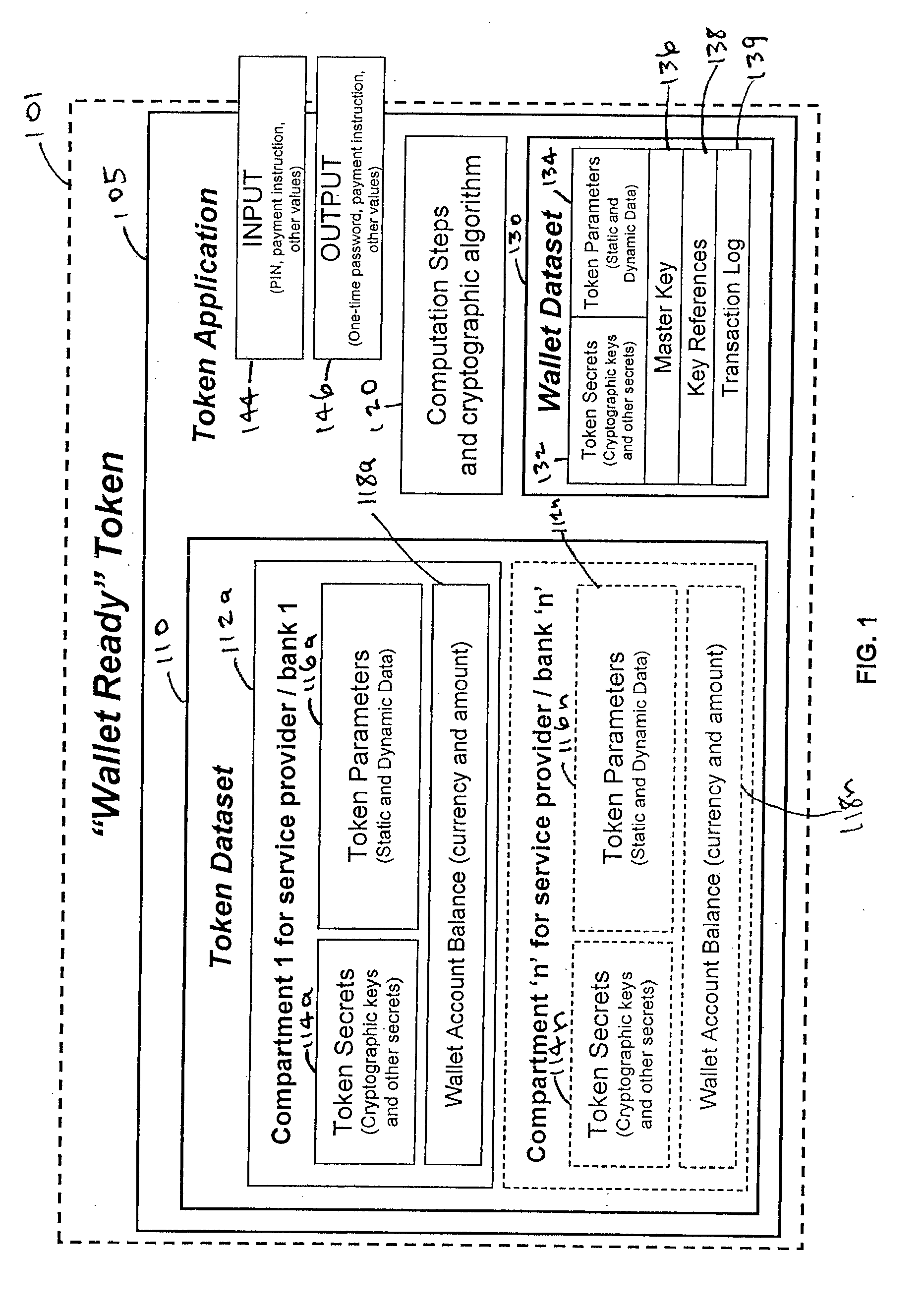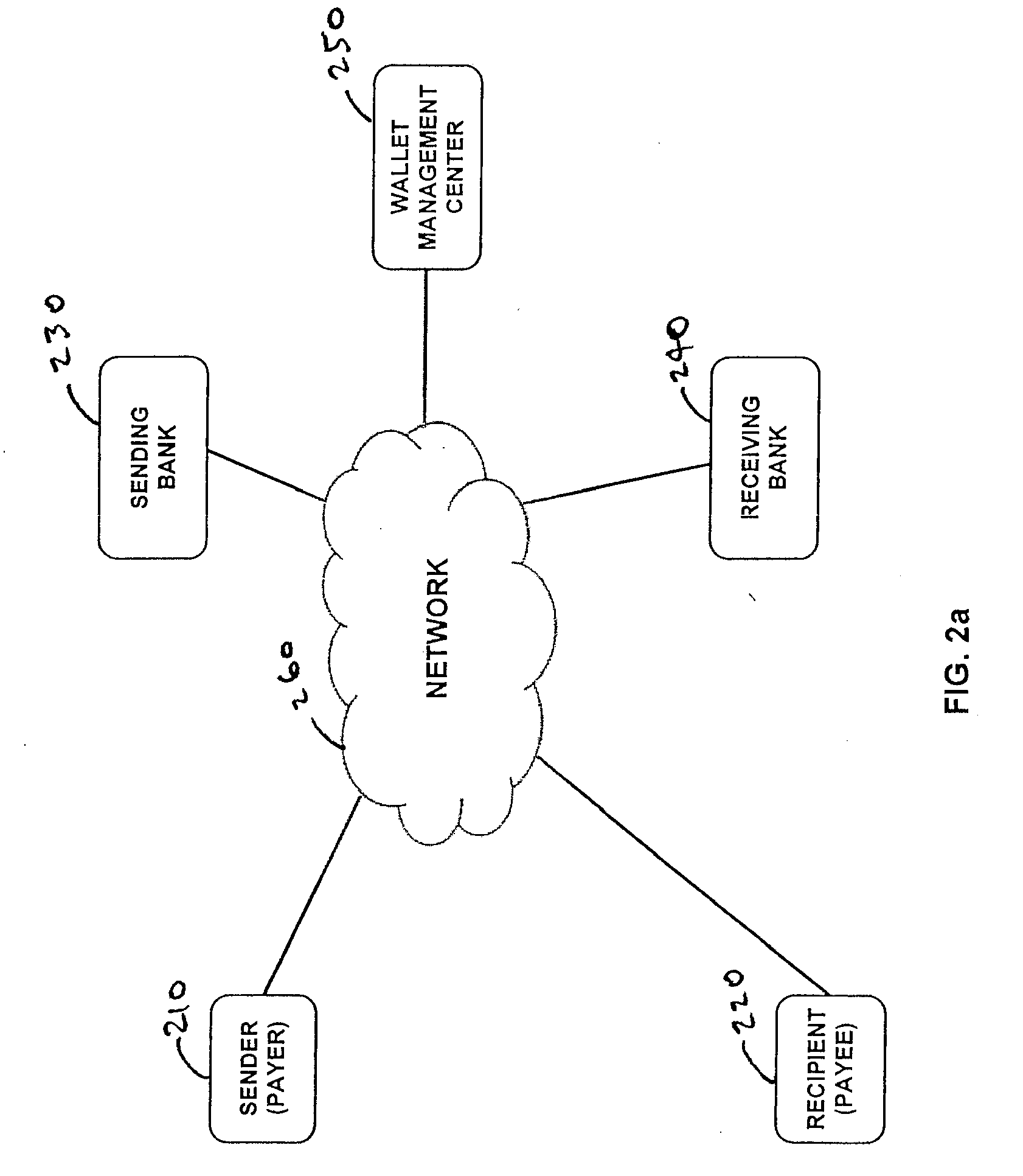Banks and other financial institutions that issue credit cards do absorb credit and collection risks in such transactions, but often offset these risks with retail transaction fees and
consumer payment and interest fees.
In some instances, merchants do not even verify signatures on
credit card transaction vouchers.
Moreover, for smaller transactions, such as car parks and
toll gates, merchants often bypass real-time online
credit card authorization altogether.
In general, because the conventional
credit card system is grounded on a trust foundation, it is susceptible to abuse and fraud.
Fraudulent transactions occur in both the physical and the online commerce environments.
Due to
anonymity in the online environment, it is much more difficult for the consumers to verify the authenticity of the merchants and vice versa.
Accordingly, many consumers hesitate or outright refuse to enter credit card numbers online.
Moreover, spoofing of web sites has led even more online consumers from refusing to provide credit card numbers for fear that they may have contacted a fake
web site.
Very few consumers have the technical expertise to inspect a SSL
certificate and to verify its authenticity.
These measures have limited success because of technical complexity and generally lower level of
usability.
In addition, because static passwords and the magnetic stripe based cards are inherently insecure, credit card companies advocate the use of smart cards that have built-in microprocessors and memory and that can perform
mutual authentication with the connecting devices when the cards are used (e.g., the Europay,
MasterCard and Visa (EMV) initiative).
In addition to replacing existing magnetic stripe cards with new smart cards, these new systems require worldwide systems infrastructure
upgrade and a massive replacement of all card-accepting devices to equip with
smart card readers (e.g., point-of-sale terminals and card
authorization devices).
In sum, this undertaking will take considerable time and money, while not eliminating security vulnerabilities of the conventional credit card system remain in the interim when cards and card-accepting devices are upgraded.
While this first alternative payment method offers privacy (hiding credit card and
bank account numbers from payees) and convenience (email notification), it offers a lower level of security.
Outgoing emails are subject to ‘
phishing’ attacks.
In addition, because credit cards are used as
funding source for
online payment, the financial intermediary cannot eliminate the transaction cost of the credit cards.
This results in a higher total cost than traditional credit card transactions.
Although the second alternate payment method allows each check number to be used only once and a clearing house is able to reject duplicates, security is still susceptible.
However, their limitations include the need for special card reading devices or POS terminals and heavy infrastructure for a central clearing house if the cards are used for more than one organization.
In addition to the shortcomings already mentioned, gift cards, stored-value cards and
smart card based
electronic cash reduce money liquidity because the money is pre-paid before the actual goods and / or services are purchased.
Thus, the pre-payment method is usually restricted to a single organization or a small group of merchants.
Again a significant
disadvantage is the reduction of money liquidity.
The limitation is usually a constraint in total allowable monthly transaction value.
The limitations of alternative currency are lower security and reduced money liquidity.
As a result, tracking money flow is more difficult or not possible, especially when the alternative currency is used outside the national boundary.
However, high costs and technical complexity for implementing such systems deters their widespread deployment.
With the exception of the electronic check and the utility bill linked transaction systems, the current alternative payment methods suffer from reduced money liquidity.
Nevertheless, electronic check systems do not guarantee that money is available for transfer because there is no validation of available fund before a check is submitted to the
issuing bank of the payer.
With the exception of smart card based
electronic cash systems, none of the current alternative payment methods are capable of direct
money transfer between the payer and the payee.
For the second type (electronic check), it is possible to directly send the electronic check from the payer to the payee but the payee cannot verify whether the payer has sufficient funds until the check is submitted to the bank of the payer.
Yet another problem with the systems and processes described above is limited to no authorization control beyond the holder of payment instrument.
However, such cards do not provide control over whether or not a particular transaction can be completed at the time of the transaction.
In each instance, this lack of flexibility results in losses such as opportunity costs or outright financial waste.
Each presently available alternative payment method is conventional and each has significant limitations.
These prior systems often lack support for direct transaction between the payer and payee with high level of confidence that there are available funds for
money transfer at the time of transaction, lack security without incurring a
usability burden, reduce money liquidity, and typically are incompatible with the existing banking systems.
Moreover, they lack additional check and balance mechanisms for account control within an established monetary
ecosystem.
 Login to View More
Login to View More  Login to View More
Login to View More 


